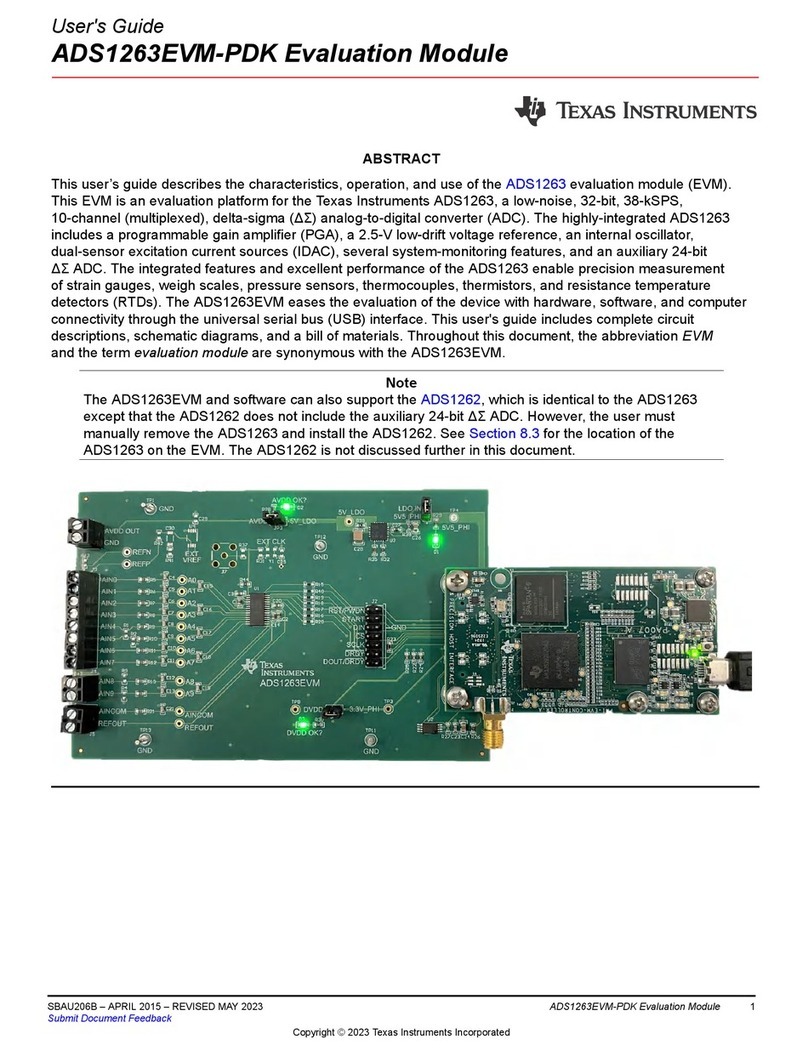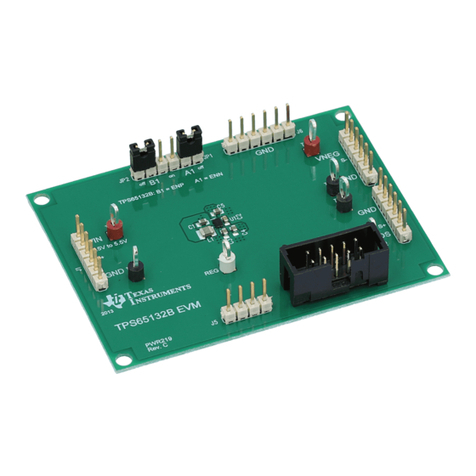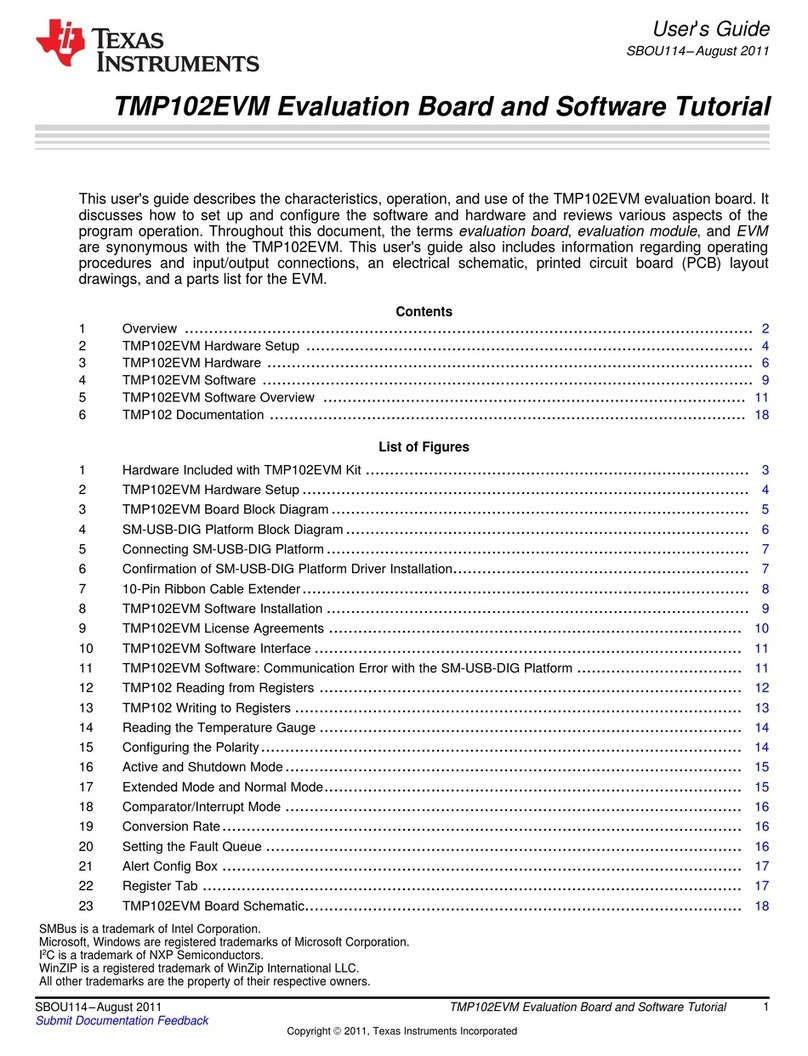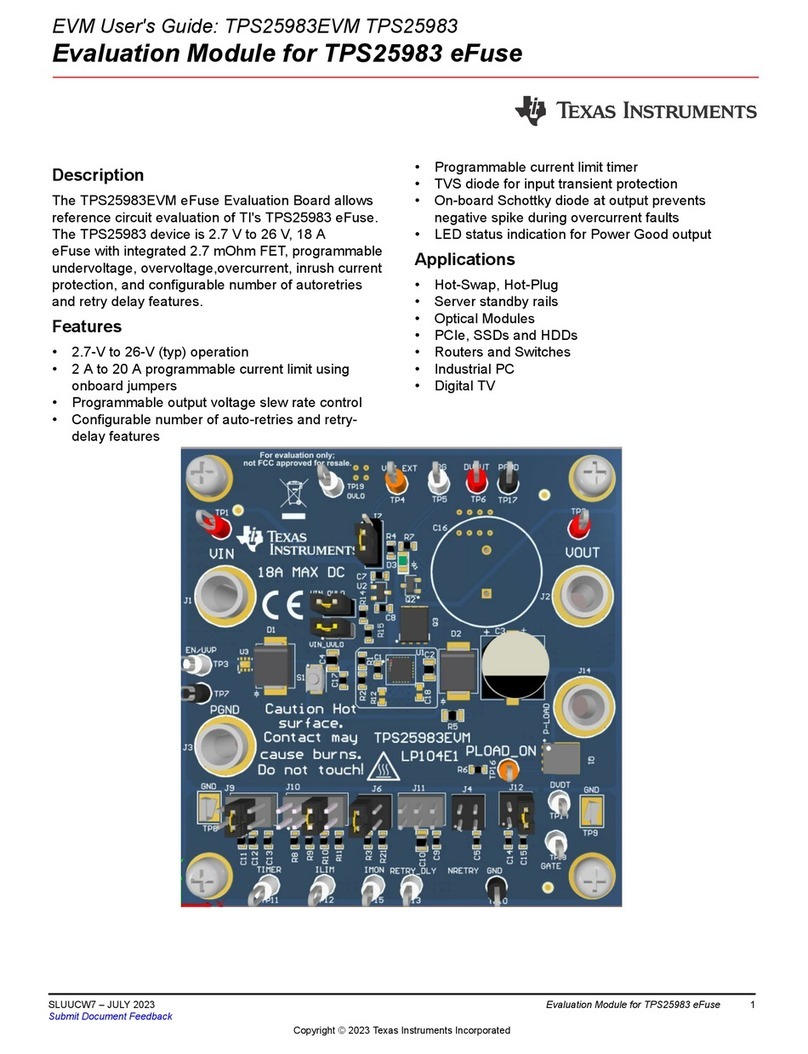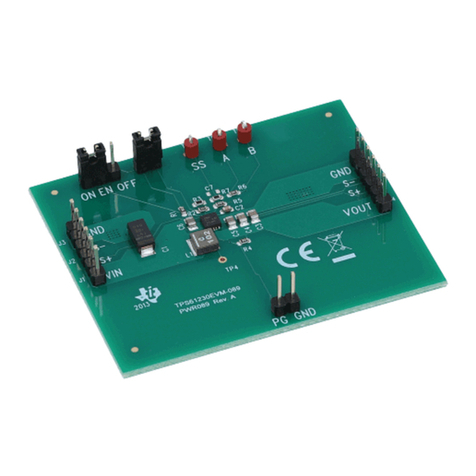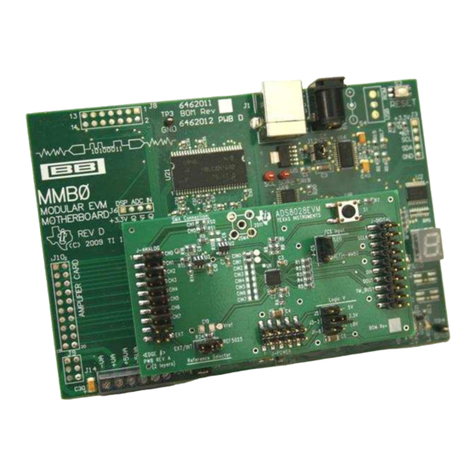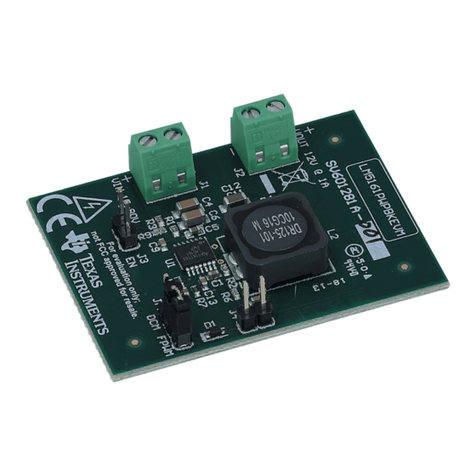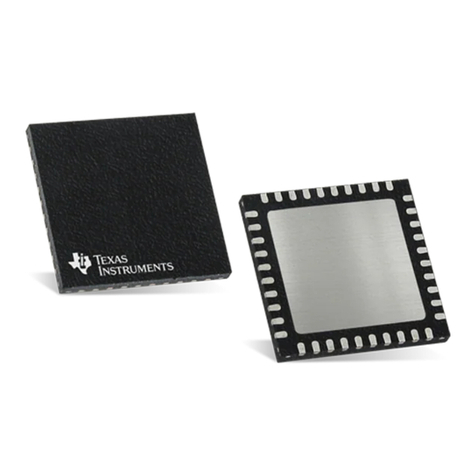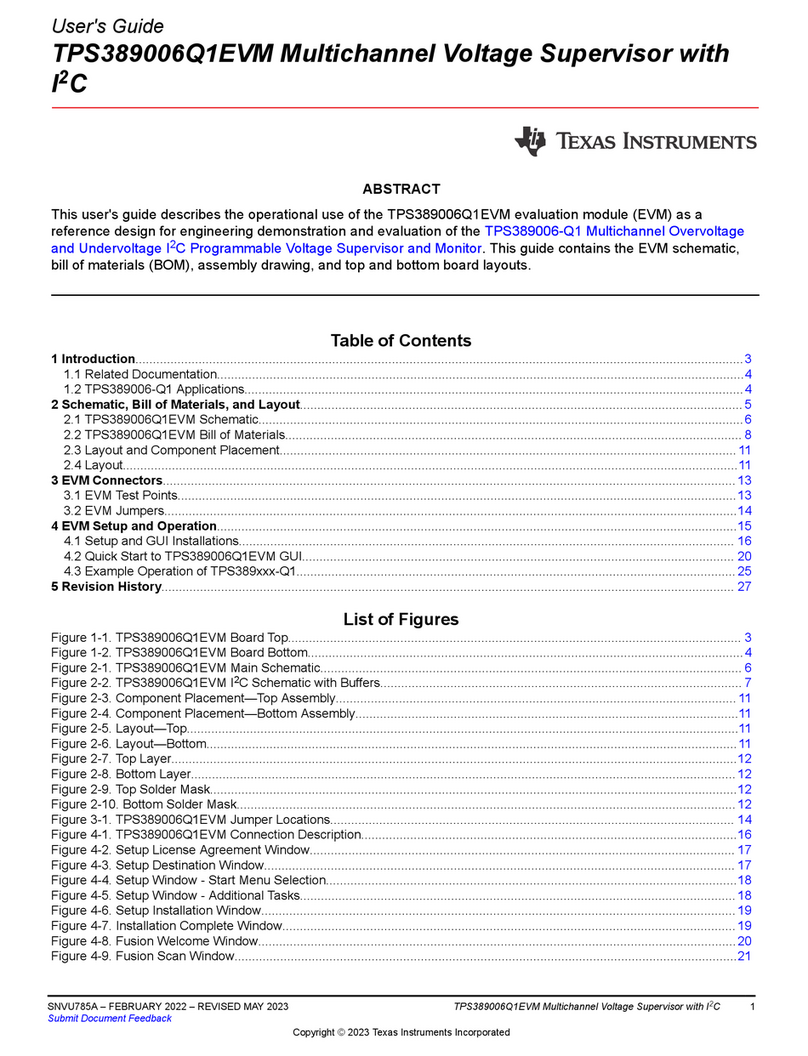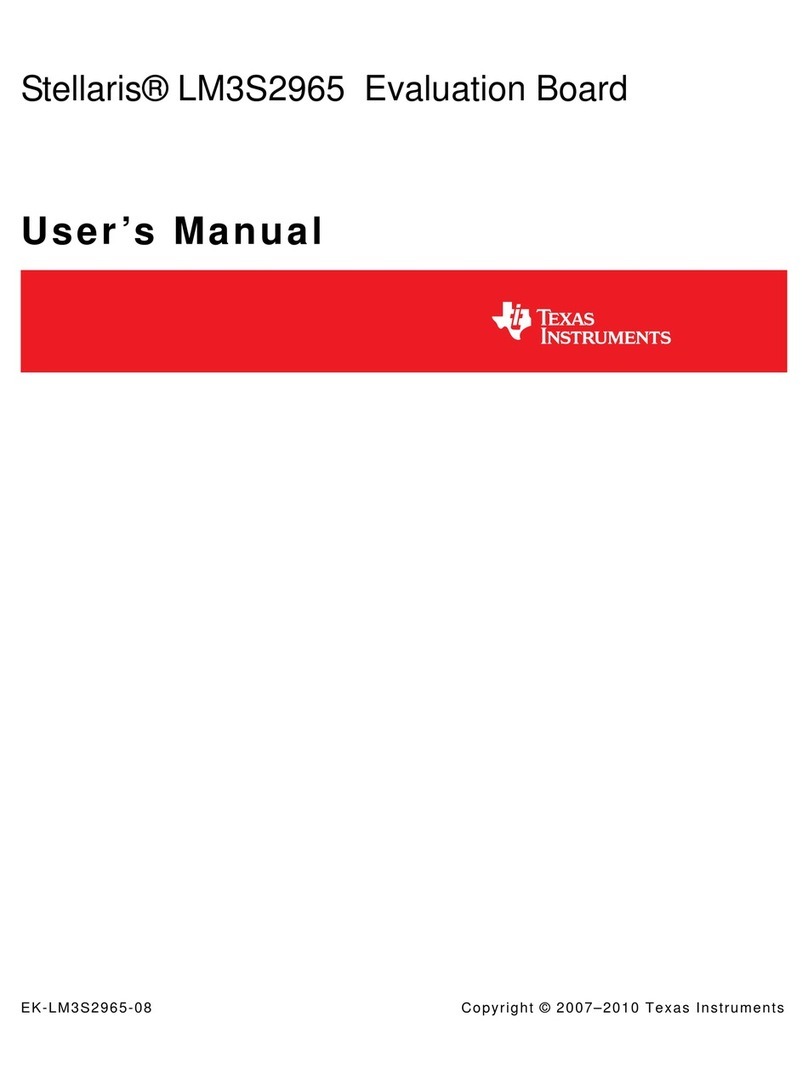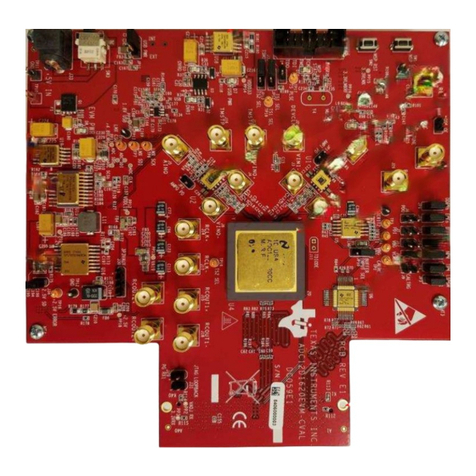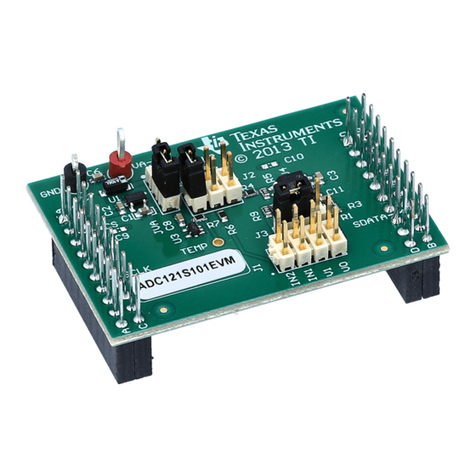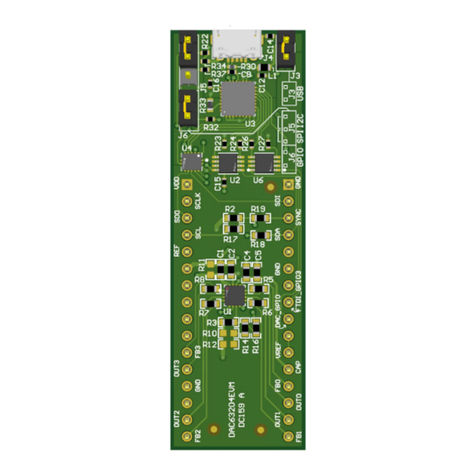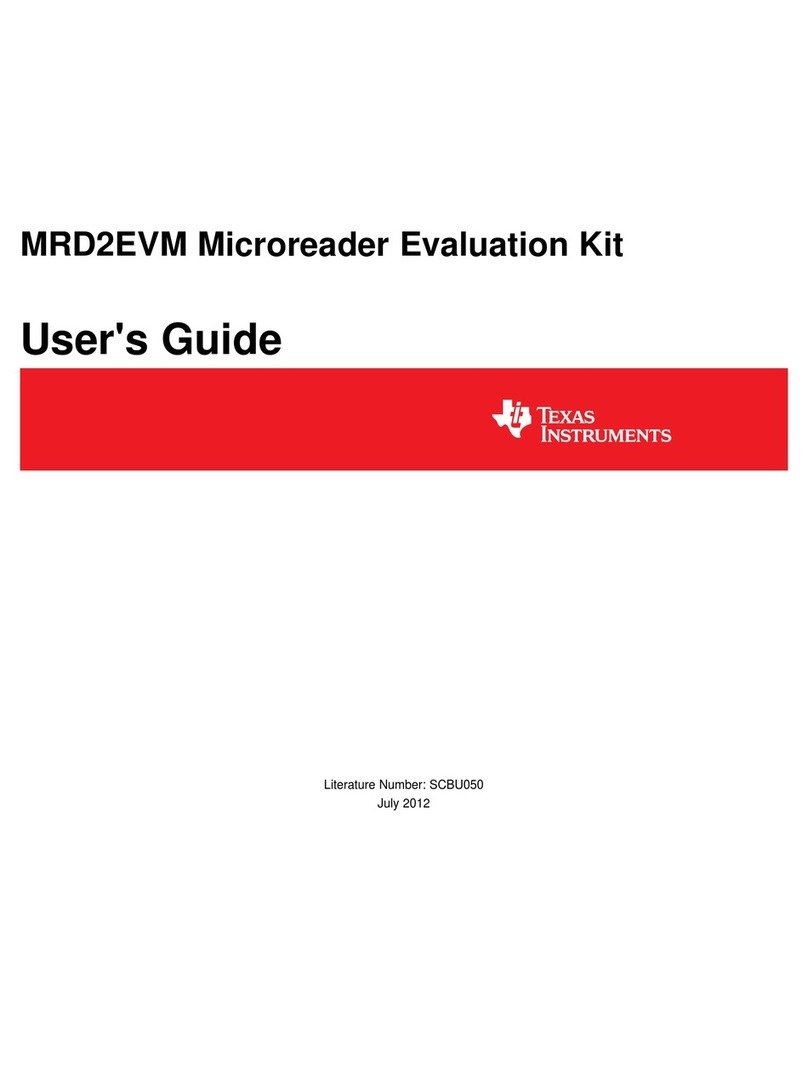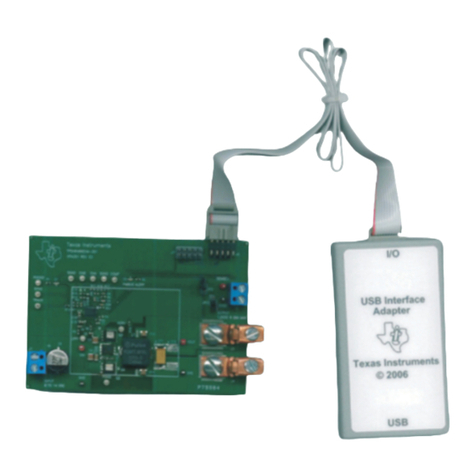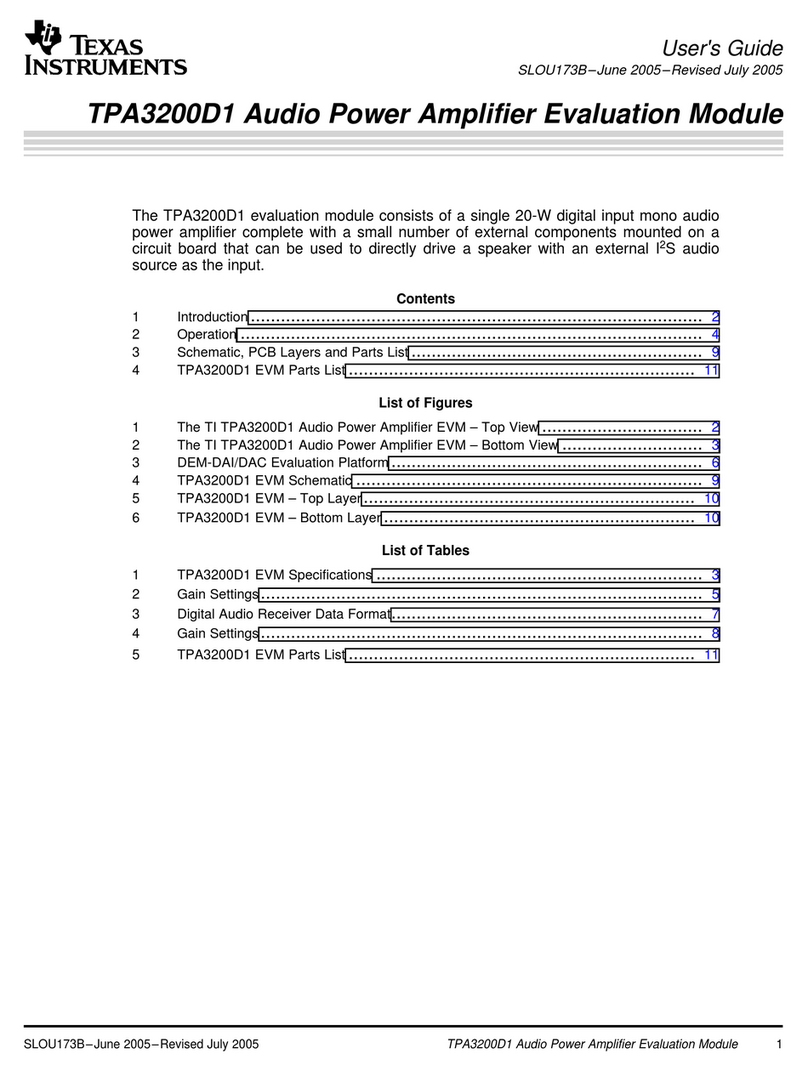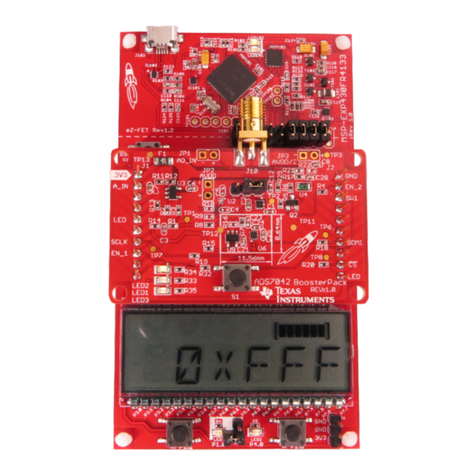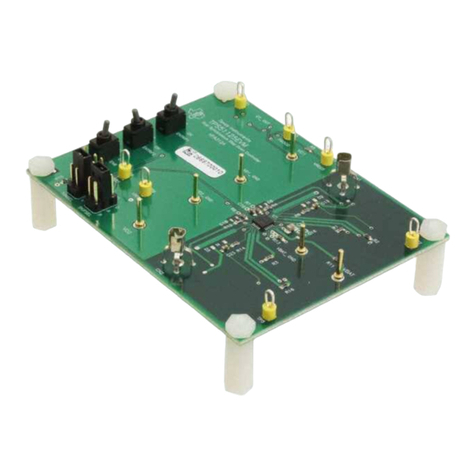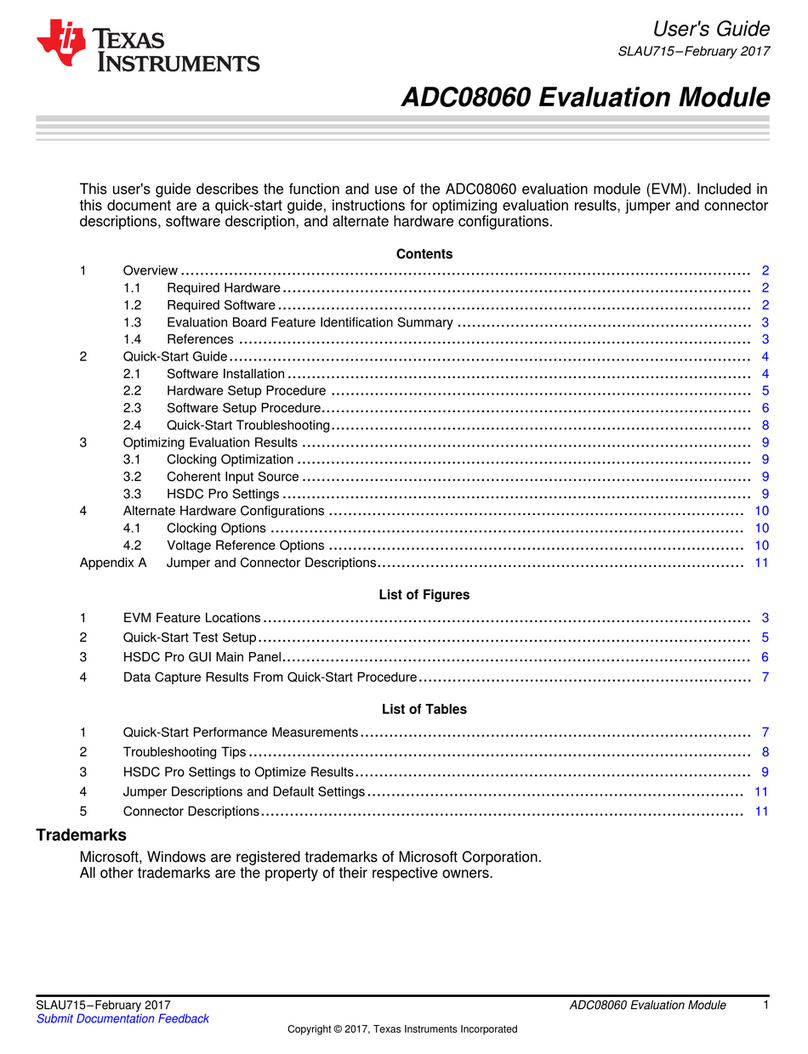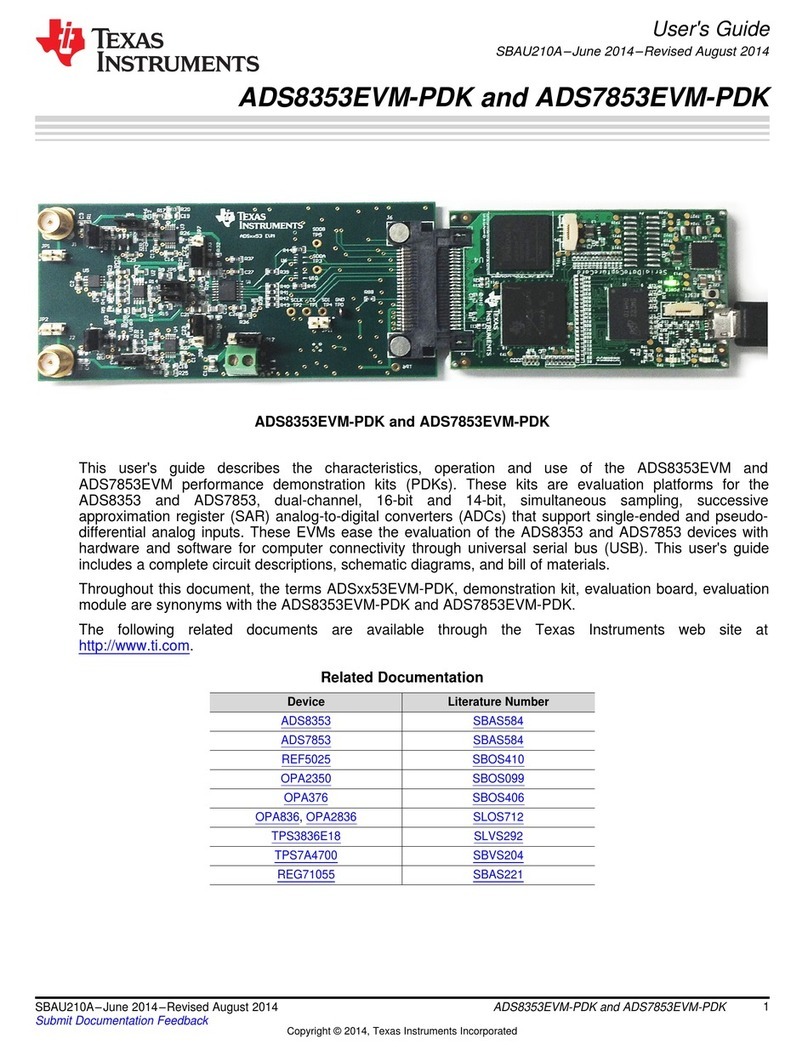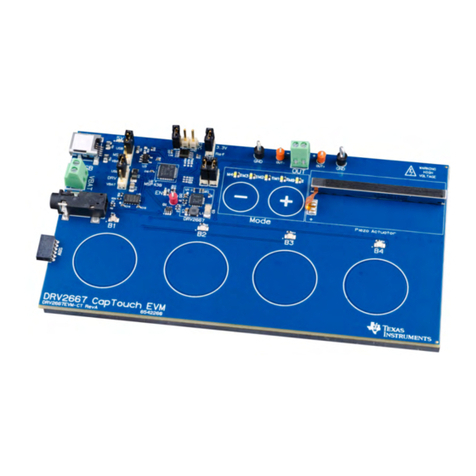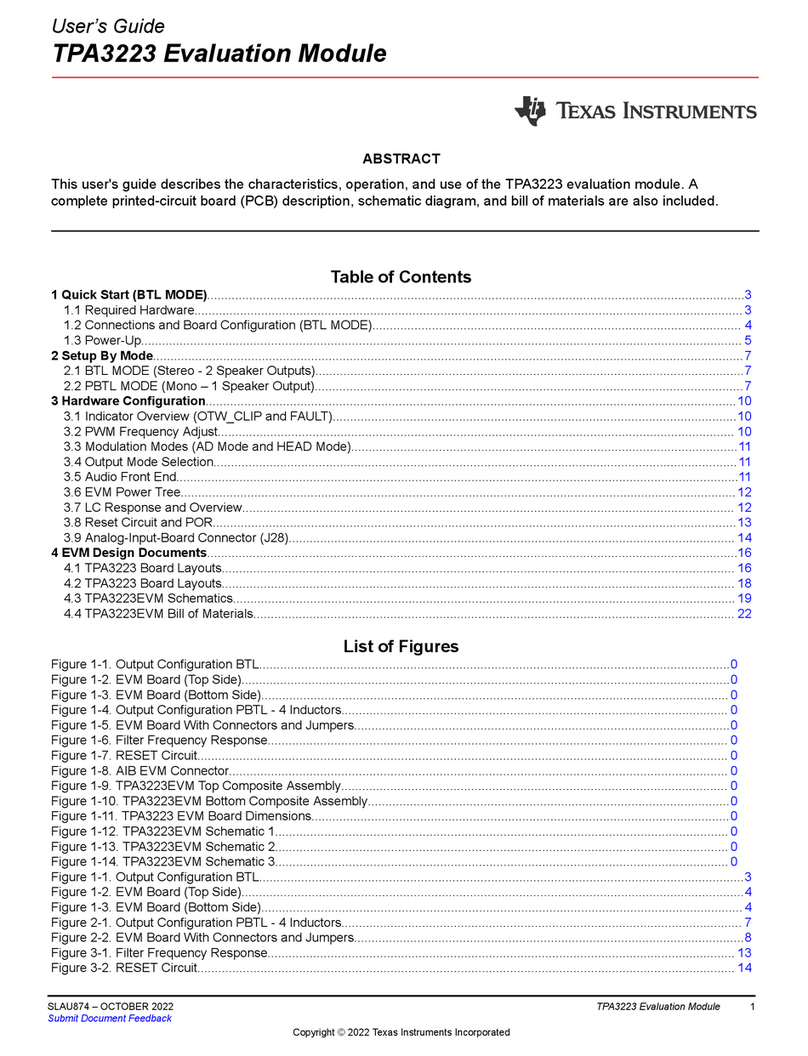
2.1.5 Reference Clock
Connect the CLKINP SMA connector to a high-quality signal source such as an SMA100B signal generator. Both
CLKIN inputs are terminated internally with 50 Ω to AC-GND (that is, GND connection is formed by an internal
capacitor), so no external termination is required or recommended. Input can be driven differentially, connect
both CLKINP and CLKINN SMA connectors to a balun or a differential clock source.
The default EVM profile configures the device in buffer mode. Logiclk is on by default with a predefined output
divider value of 128. The input frequency can be modified per the operating range of each functional element if
desired. This EVM setup guide and related plots assume 800-MHz input at CLKIN for buffer mode.
To evaluate SYSREF repeater mode, connect the SYSREF input SMAs to a differential output source such
as an arbitrary function generator. The EVM connections for the SYSREF input are DC-coupled and provide
internal 100-Ω termination with several biasing options. At POR, the EVM automatically applies a weak 1.3-V
common mode bias to the SYSREFREQ pins. However, the default EVM profile configures the SYSREF input
for DC-coupled input. In DC-coupled mode, the common mode bias on the SYSREFREQ pins must be between
1 V and 2 V. The input common mode requirements can be fulfilled with a standard LVDS output buffer.
For evaluating SYNC mode and SYSREF windowing, to have a SYSREFREQ input source capable of
consistently meeting setup and hold requirements for a single cycle of the input clock is critical. This can become
very challenging at higher frequencies where set up and hold requirements can be < 50 ps. Another device
capable of picosecond-precision timed pulses, such as LMX2820 or LMX2594, can be used as a reference input
to both CLKIN and SYSREF for evaluating these features.
2.1.5.1 Output Connections
All CLKOUT connections are AC-coupled at the LMX1906-SP EVM and can be connected directly to RF
instruments with 0VDC requirements; an additional DC block is not required. The unused CLKOUT SMA
connector must be terminated with a 50-Ω load, or a differential connection can be used if a balun with the
best frequency range is available.
Recommended oscilloscope connections include one CLKOUT and one SYSREF output from the same channel,
as well as the one LOGICLK and one LOGISYS output.
Other unused CLKOUT SMA connectors must be terminated with 50-Ω single-ended or 100-Ω differential load,
or alternately must be disabled in software, to minimize unterminated output effects on performance.
2.1.5.2 Header Information
The LMX1906-SP EVM can be operated in either pin mode or SPI mode. Pin mode allows basic configuration
of the LMX1906-SP device without the need of a microcontroller. SPI mode provides full customization of the
LMX1906-SP device. Mode of operation is set via on-board headers J31 to J39 which can also be controlled
via the IO expander, more information on this can be found in Section 2.1.5.7. Other headers are used to select
power supply source and set the CE pin.
2.1.5.3 Default Configuration
The LMX1906-SP EVM silicon default is buffer mode with all outputs enabled with maximum output power. SPI
is disabled in this mode assuming no jumpers are being utilized and neither the IO expander. LOGICLOCK is
also enabled in this mode with a fixed divider value of 128.
www.ti.com Hardware
SNAU288 – DECEMBER 2023
Submit Document Feedback
LMX1906-SP Evaluation Module 7
Copyright © 2023 Texas Instruments Incorporated
